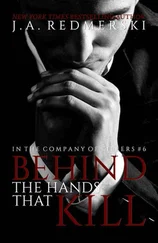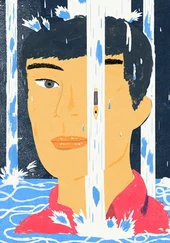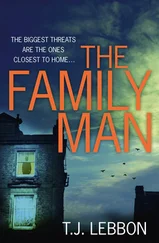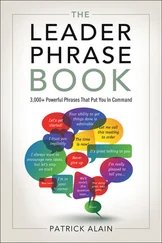My affair with Bennett had been so complete a secret that performing the night before in the brightly lit room with a stranger had been a kind of extreme antidote; it made me feel that I set the terms.
“Say again?” I said to Shalonda.
“Where did you go?” She was grinning. “You just went somewhere.”
I blushed at the unprofessional lapse. I apologized for a late night and turned my attention back to my patient.
“I said I know who I am in whatever form I take. The surgery doesn’t take anything away from me. Well, besides the obvious.”
This felt like cheating — I was getting as much if not more from the session than Shalonda. Her solid sense of herself, her calm wisdom — I felt better the longer we talked.
I told Shalonda it had been a privilege to work with her and said I hoped she would let me know how she was doing on the outside. I gave her a business card, after adding my home number to it in ballpoint pen. We hugged each other, and Shalonda said, “It’s a good feeling to surprise yourself — you’ll see.”
Was Shalonda a mind reader? I’d certainly surprised myself last night.
I decided to walk across the bridge to Queens even though it looked like a military zone with its razor wire and checkpoints. The wind was chafing.
I’d had all the surprise I needed, thanks to Bennett. Or so I thought. When I passed a deli with a newsstand, I stopped when I read the Post headline: “Heartless.” The cover story was about a fifty-two-year-old woman found in her painting studio in Sag Harbor with her heart cut out of her body and placed on top of her chest.
I sat down on a milk crate and put my head between my knees. When I could, I stood up and bought the paper. The clerk called after me to give me my change.
The reporter wrote that the body had been posed in an approximation of self-portraits the victim had made in which she photographed herself with a pig’s heart on her chest. The coroner estimated the death had occurred a week prior. There were no leads yet as to who might have committed the grisly murder.
I was in that studio a week ago. Pat’s dog had lunged at the window, at a sound outside. If I hadn’t left when I did, would I have been killed, too? My hair lifted slightly from my scalp as though lightning had passed through me. Had Pat’s killer seen me through the windows? Was the killer watching me now? I flagged a taxi and gave Steven’s address to the driver. I’d have to ask Steven to pay the fare from Queens.
“You’re staying here tonight,” Steven said after I told him what had happened.
“What about Olive?”
“We’ll smuggle her in.” Dogs were not allowed in his building.
“Samantha was the one who told me where Pat lived. She still thinks Bennett’s alive. She says he writes to her and sends her flowers.”
Steven asked if I thought Samantha was capable of an act of such savagery.
“I think she followed me to Sag Harbor.”
“You didn’t tell me this. You’ve got to go to the police.”
“They didn’t take me seriously when I called them about Susan Rorke.”
“You weren’t there when she was killed.” Steven handed me his cell phone.
I did what he wanted. I was connected with a detective in the Suffolk County PD and told him my suspicions in the calmest “I’m not a crazy person” manner I could summon. I said I thought this person had killed twice and told him about Susan Rorke. He scheduled an early-morning appointment for me to make a statement.
I was exhausted when I got off the phone. I slumped into a chair in Steven’s living room, head in hand, the picture of defeat. Then Steven asked if I was ready to go pick up Olive. I saw that while I’d been on the phone, he had emptied out his gym bag and outfitted it with a soft fleece and towels warm from the dryer for my little dog.
The local news coverage of Pat’s death seized on her being the granddaughter of the abstract expressionist Paul Loewi. Loewi was a contemporary of de Kooning and Pollock’s, famous for his Slaughterhouse paintings, giant, black canvases with carcasslike red forms. An “artist’s artist,” he had not shared the wealth or international acclaim of his friends, but his paintings were valued by those in the know.
Steven and I watched the coverage on every news channel. I needed to hear every account of the gruesome murder. Yet no matter how many reporters spoke about it, I could not shake the feeling of disbelief.
Nancy Grace was on a tear: One theory about the murder put the blame on a religious cult in the area that practiced ritual animal killing as part of their worship. She said that pets had disappeared on the East End over the past six months. The deceased’s dog was still missing. Another theory was a drug-fueled thrill kill, she said. But no suspects were in custody.
“Nancy Grace should meet Samantha,” I said.
Her next guest was an expert on religious ritual killings. He said that removing the heart from an animal is not uncommon, that in many animist religions, the heart signifies strength; by biting into it, the person who removed it assumes that creature’s strength. But to remove a human heart and place it atop the body is a desecration, unheard-of in any religion. It is an act of violence with nothing to redeem it spiritually, the expert said. Nancy Grace asked if he felt this murder was more along the lines of a cult like Charles Manson’s followers.
The expert said, “The violence in this case is personal.”
I asked Steven to pass me my cell phone on the table near him.
I called Amabile and asked him to come with me to the precinct. I needed a cop who would believe me, not suspect me. I knew he had a cousin who was a detective in the Suffolk County PD.
“He’ll listen,” Amabile said. “He’s a stand-up guy. If you don’t mind the motorcycle, I can drive you.”
Amabile was a stand-up guy. And I told him so.
• • •
Riding a motorcycle on salted, icy streets in early winter put me in mind of the nickname donorcycle. I’d had spinouts on bikes as a teenager, and even though Amabile gave me a helmet to wear, my legs were vulnerable if we skidded out. On the other hand, holding on to a guy and leaning against his body is a sexy ride. I worried that Amabile might misread this — I was pretty sure he still wished things could have worked out with us.
I got the cycle equivalent of sea legs and wobbled when I climbed off the bike. Amabile righted me with a hand on my arm, so that I first leaned into him. His arm went around me until I got my footing. We carried our helmets as we entered the precinct house.
Amabile’s cousin, Bienvenido, invited me into an empty interview room and brought me a cup of hot coffee.
“I may have been the last person to see Pat Loewi alive.” I told him why I had gone to see her and that it was the only time I had met her.
“When did you get there and what time did you leave?”
This was the first question in an hour of questions designed to eliminate me or establish me as a suspect. He gave his notes to another cop to check out my story, then asked if I’d noticed anything strange about Pat’s behavior that afternoon. I told him it would be easier to tell him what wasn’t strange about it. I asked if Amabile had told him that Pat had once lived with my late fiancé.
“I know the history,” Bienvenido said. “What else can you tell me?”
“You could look at Samantha Couper.” I told him why.
When we finished, Amabile said, “Thanks, man. Appreciate this.”
I thanked Bienvenido, too, and he said, “You’re welcome.”
“No, you’re ‘welcome,’ ” I said. “I know that much Spanish.” Bienvenido.
Читать дальше
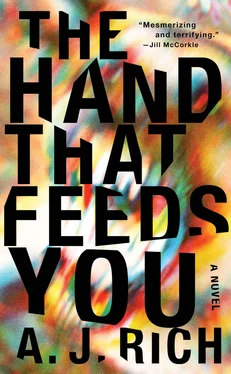
![Корнелл Вулрич - Eyes That Watch You [= The Case of the Talking Eyes]](/books/32103/kornell-vulrich-eyes-that-watch-you-the-case-of-thumb.webp)
